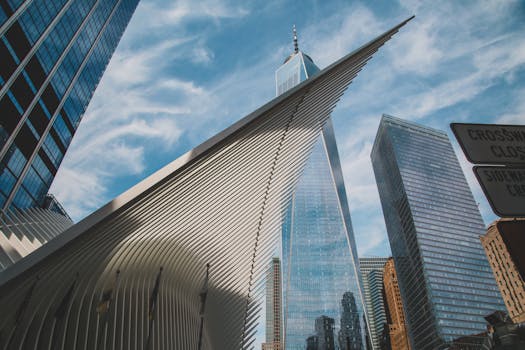
NYC & San Francisco Reign Supreme: Topping the List of World's Most Expensive Cities to Build In
The construction industry faces unprecedented challenges globally, but nowhere is the squeeze felt more acutely than in New York City and San Francisco. These two iconic American cities consistently top the lists of the world's most expensive places to build, a reality impacting everything from affordable housing initiatives to large-scale infrastructure projects. This escalating cost isn't just an inconvenience; it's a significant factor influencing economic growth, urban development, and the overall quality of life. This article delves into the reasons behind these exorbitant costs and explores the potential consequences.
The High Cost of Construction: Why NYC and San Francisco Lead the Pack
Several intertwined factors contribute to the astronomical construction costs in New York City and San Francisco. These aren't isolated issues but rather a confluence of challenges creating a perfect storm of expenses.
1. Land Costs: A Prime Driver of Expense
The most significant driver is the sheer cost of land. Both cities boast highly desirable locations, resulting in incredibly high land values. This is particularly acute in prime areas, pushing construction budgets sky-high before a single foundation is laid. Competition for available land, especially suitable for development, fuels a bidding war that inflates prices exponentially.
2. Labor Shortages and High Wages: A Growing Concern
A critical factor exacerbating construction costs is the significant labor shortage in both cities. The skilled labor pool, including architects, engineers, contractors, and specialized tradespeople, is struggling to keep pace with the demand. This scarcity naturally drives up wages, a cost directly reflected in overall project expenses. The competition for skilled workers further intensifies the pressure on already tight budgets.
3. Strict Regulations and Permitting Processes: Navigating Bureaucracy
New York City and San Francisco are known for their stringent building codes and complex permitting processes. Navigating this regulatory labyrinth is time-consuming and expensive, adding significant overhead to projects. Environmental impact assessments, historical preservation requirements, and accessibility regulations, while important, add layers of complexity and delay, increasing costs. This bureaucratic burden is a major contributor to project timelines and overall expense.
4. Material Costs and Supply Chain Disruptions: Global Impact
The global supply chain disruptions, particularly prominent in the aftermath of the COVID-19 pandemic, have further impacted construction costs. Materials like steel, lumber, and concrete have experienced significant price increases, adding to the financial strain on projects. Transportation costs have also risen, further escalating the price of materials and affecting delivery timelines.
5. Inflation and Economic Factors: A Broader Context
The broader economic landscape plays a role too. Inflation erodes purchasing power, making every aspect of construction more expensive. Increased interest rates and fluctuations in the market further complicate the financial viability of large-scale projects.
The Ripple Effect: Impact on Housing, Infrastructure and Economic Growth
The exorbitant construction costs in NYC and San Francisco have far-reaching consequences:
- Affordable Housing Crisis: The high cost of building directly contributes to the acute affordable housing crisis in both cities. Developers struggle to create affordable units, widening the gap between the cost of living and average incomes.
- Infrastructure Development Delays: Major infrastructure projects face significant delays and cost overruns, impacting public transportation, utilities, and other essential services.
- Economic Competitiveness: The high cost of doing business in these cities impacts their ability to attract businesses and retain talent, potentially slowing economic growth.
- Limited Development Opportunities: Smaller businesses and startups find it increasingly challenging to secure space and build, hindering innovation and entrepreneurship.
Potential Solutions and Future Outlook
Addressing this multifaceted challenge requires a multi-pronged approach:
- Streamlining Permitting Processes: Simplifying regulations and streamlining the permitting process can significantly reduce project timelines and costs.
- Investing in Workforce Development: Investing in training programs to expand the skilled labor pool is crucial to ease labor shortages and moderate wage increases.
- Exploring Alternative Construction Methods: Innovations in construction technologies, such as modular construction and 3D printing, could potentially reduce costs and construction time.
- Addressing Land-Use Policies: Revisiting land-use policies to increase the availability of developable land could ease pressure on land prices.
- Public-Private Partnerships: Collaboration between public and private sectors can leverage resources and expertise to tackle large-scale infrastructure projects.
Conclusion: A Complex Challenge Demanding Collaborative Solutions
The high cost of construction in New York City and San Francisco is a complex problem with no easy solutions. It's a challenge demanding innovative thinking, collaborative efforts, and a long-term commitment to addressing the underlying factors. Finding a balance between economic development, affordable housing, and sustainable urban growth is paramount to the future of these dynamic cities. The future of these iconic cities depends on effective strategies to mitigate these exorbitant construction costs and create more sustainable and equitable urban environments. The current trends suggest a continued need for creative and comprehensive solutions to tackle this growing challenge.

















